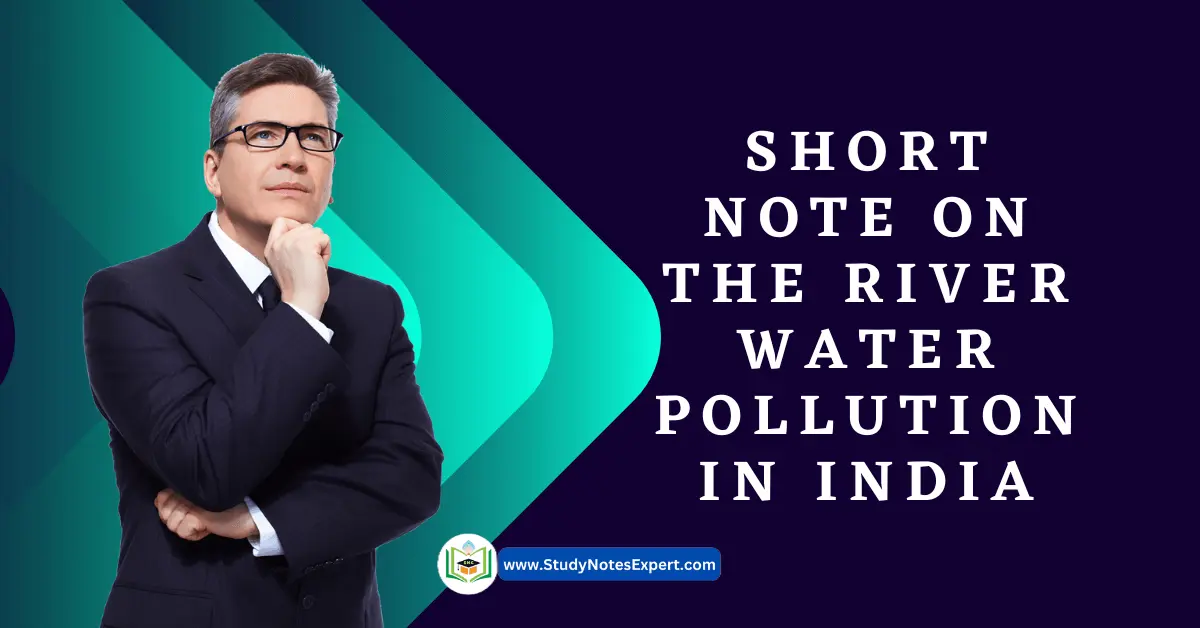River water pollution in India has now arrived at a crisis point. Almost every river system in India is now polluted to a considerable extent. As assessed, nearly 70 percent of water in India is contaminated. Many large rivers are closely associated with Indian culture and heritage. The Ganga, India’s most sacred and important river, is the cradle of Indian civilization.
The Ganga, a self-purifying and fast-flowing river, also has a significantly high organic pollution load. It also shows river water pollution in India. At Kanpur, 45 tanneries and 10 textile mills are the significant sources of liquid wastes discharged into the river Ganga. The wastes contain a heavy organic load. It is estimated that 1,400 million liters of sewage and 200 million liters of industrial effluents are being discharged daily into the river Ganga.
River Water Pollution in India
The river Hooghly at Kolkata receives wastes from various factories dealing with pulp and paper distillery, tannery, textile, heavy chemicals paints and varnishes, shell, matches, pigment insecticides, and fungicides. It increases the river water pollution in India. Also, the effluent of the Andhra paper mill pollutes the river Godavari at Rajahmundry (Andhra Pradesh). The river Kalu in Mumbai receives highly acidic and untreated wastes from Amar Dye and chemical company.
Industrial Development is significant because the production of chemicals resulted in the generation of toxic and hazardous substances, which has continuously increased during the last three decades. Industrial discharges containing toxic and dangerous substances contribute to severe river water pollution in India in the aquatic systems. Industries generate significant wastewater, ultimately reaching a stream/river. Though comparatively less in volume, industrial effluents cause a powerful menace to the aquatic environment and biotic communities, including fish, ultimately affecting humans through the food chain.
The Central Pollution Control Board’s data shows that the Ganges, one of the major rivers in India with a stretch of 1760 km, is severely polluted in terms of Biochemical Oxygen Demand (BOD). Tapti, Narmada, Indus, Mahi and Sabarmati follow it. These rivers also shows the river water pollution in India. The Board’s ten years of data indicate that 14 percent of the entire riverine length in the country (6,086 km) is severely polluted with a BOD level of more than 6 mg a liter. About 19 percent of the rivers are moderately contaminated with BOD levels between 3-6, while 67 percent of waterways (30,242 km) are relatively clean.
In the river waters, Maharashtra has the most extended riverine length and the most polluted BOD load. It is followed by Uttar Pradesh, Madhya Pradesh, Andhra Pradesh, Orissa, and Gujarat, which have more than 6 BOD levels. The river Yamuna maintains a reasonably good quality length from Yamunotri in the Himalayas to Wazirabad in Delhi (about 375). However, the discharge of wastewater through 15 drains between Amirabad barrage and Okhla barrage renders the river almost a sewage drain with BOD values ranging from 14 to 28 mg/1 and high coliform content without any dissolved oxygen.
In India, about 1,35,000 polluting industries generate about 13,000 million liters a day of wastewater, of which only 60 percent generated from large and medium enterprises is treated. It is also an indication of river water pollution in India. Distilleries caused the largest pollutant load, followed by the textile, engineering, and pulp & paper industries.
In the domestic area, 299 class I cities and 345 class II towns generate about 23,000 m/d of wastewater, of which only 6,000 m/d is treated. A large part of the domestic sewage still needs to be collected. This results in the stagnation of sewage within the city, which becomes the breeding ground for mosquitoes and contaminates the groundwater. On the other hand, domestic sewage is the most important pollution source contributing to pathogens, the main source of water-borne diseases, and the depletion of oxygen in water bodies.
Over the years, Gomti, one of Lucknow’s major water sources, has become the most polluted river in Uttar Pradesh. Monitoring by the state air pollution control board reveals the water is unfit for consumption. The fish had died as the dissolved oxygen level of the water had dipped too low. All this has virtually converted this sacred river into the river of sin.
For some people, industrial effluents discharged by paper mills, Sugar factories, and distilleries in the upstream areas of Sitapur and Lakhimpur-Kheri spelt doom for the aquatic life. The extent of pollution is such that the river’s biodiversity is being affected. Two organisms- Solariella (molluscs) and Hemicypris auroral-that survive in polluted water were found in the Gomti river. The presence of hyacinth is another factor in bringing down the dissolved oxygen level.
The Central Ganga Authority was established in 1985 to lay down policy projects to be taken up under the Ganga Action Plan (GAP) to remove river water pollution in India. In July 1955, this Authority was redesignated as the National River Conservation Directorate (NRCD). The NRCD has drawn up the National River Conservation Plan and coordinates the implementation of the schemes under GAP and the Action Plans for the other rivers.
More than Rs. 500 million has been spent on GAP, but pollution levels in the Ganga are as high as ever. This is an indication of river water pollution in India. Meanwhile, a new National Lake Conservation Plan has come into being.

